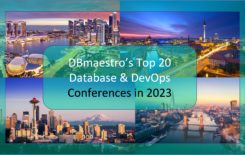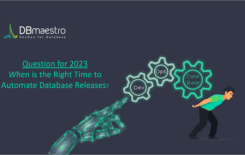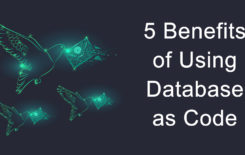Modern release management process flows have rapidly matured. Whereas they once involved the various steps involved in the release management process, they have grown to become a holistic concept.
Application release automation (ARA) now includes automation of the entire release pipeline, all the way from creation of a change ticket to its business benefit to the user. ARA solutions have become a competitive necessity as the release deployment process is getting faster, on average. Without an agile release process or automation tool, companies might find themselves without direction as the tempo of releases goes up.
Immediate Benefits of Application Release Automation
Adopting ARA is something that can pay off from the get-go. For instance, the increased visibility enabled by ARA into release management process steps provides more effectiveness, while real-time information reduces the time and resources needed to resolve any issues.
Moreover, ARA creates a single vantage point from which to control the release management process flow in a way that is more predictable and less risky. It also coordinates the staff, stages, and tools that are part of a release process. Finally, ARA eliminates tracking spreadsheets and complex script embedding for vital parts of the release process document and release management process flow—artifact, build, configuration, and release.


Enterprise-Wide Effects
Like DevOps practices in general, using ARA requires change on various levels. In addition to the benefits that they deliver on their own, ARA tools enable the efficiency gains, scalability, operational controls, and release process information that all result from agile, DevOps, and continuous delivery implementation. Every aspect of the release management process flow, from culture to tools to work practices, must therefore adapt. The result is a quantum improvement in the quality of the release management process across the board.
Here are the major areas of benefit for an organization and its development methods subsequent to ARA adoption:
1) Culture
During initial use of ARA, many of the barriers to efficient implementation are due to culture. Tool selection is important, but methodology of the release deployment process needs to be established first.
ARA forces companies to go from theoretical questions about increasing customer value to practical questions of when and in what sequence changes to the release management process flow should occur. To this end, companies should initiate their cultural evolution by looking at their objectives and what actual release process steps they should take.
Implementing continuous delivery through ARA is also a company-wide effort. ARA requires changes from both the development and operations teams in a way that makes them more coordinated and communicative, which is always desirable.
2) Elimination of Legacy Software
Some of the problems of ARA usage are due to the way in which software is acquired by the developers and data centers that are part of the release deployment process.
When data centers purchase an ARA solution, many still engage in using or buying legacy solutions which are not always efficient. In comparison, developers generally try to leverage open-source tools like the Jenkins platform.
This causes a gap between the two, especially when it comes to agent scripts, which do not provide the visibility and flexibility needed to manage all the parts of the release management process checklist. It also results in a situation where developers enjoy the advantages of current tools while those on the production side struggle with software that does not necessarily accommodate the release deployment process. Buying one solution to meet everyone’s requirements eliminates the problem.
3) Unified Solutions
A unified solution that works for everyone will keep the data center from buying legacy products and prepare them culturally and practically for adopting agile release process practices. It is also important to note that automation cannot be an isolated task; ARA tools must work with test management and virtualizations.
The right tool will also provide freedom to development teams but still offer the ability for enterprises to universally scale solutions. Similarly, as part of the release management process flow, tools need to fit a technical team’s work style but with a UI that accommodates other teams that do not possess a high level of technical expertise.
4) Rigorous Continuous Testing
For the success of the three major parts of the release management process flow—continuous integration, testing, and deployment (or delivery)—automation is required at every stage. Continuous testing is often the weak point in the release deployment process because companies fail to employ robust, automated methods. Instead, they automate simple scenarios, or do not automate testing at all.
Enabled by ARA, the correct method is to address test infrastructure provisioning and test management.
5) Combination with Database Release Automation
Enterprises using ARA technologies often discover that databases can cause a bottleneck during release management process steps. This is because, even among companies with the most up-to-date ARA and DevOps automation tools, many still manage and deliver database changes through manual operations.
Automating database releases requires the inclusion of safety nets and controls in development processes because the results of a failure or of breaking a database release might be very painful, or even catastrophic. Combining database deployment automation with ARA enables development, testing, and DBA teams to address more essential issues while keeping a reasonable workload as they progress through the release process.
Furthermore, database deployment automation helps to eliminate human error, improve data security, and enhance application performance. As a result, the combination of ARA and database deployment automation is the optimal way to increase delivery times, safety, and reliability.
The industry’s top database release automation solution is only a click away! If you’re interested in combining ARA with database deployment automation, contact the experts at DBmaestro.






